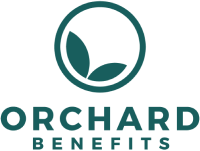The OHIP+ program, which has offered free prescription medication to all Ontarians under the age of 24 since January 1st, 2018, will undergo changes at the end of March.
Teens and young adults under the age of 24 with any form of private health benefits will no longer be eligible to receive free prescriptions through OHIP+, but for those who do not have a private plan, will continue to receive coverage for eligible prescription medications through OHIP+.
Children and youth 24 years of age and under who have a private plan will access prescription medications through their private plan, like they did prior to the launch of OHIP+ on January 1, 2018.
It ultimately means people will have to pay for what isn’t covered under their private plan.
How OHIP+ Will Impact Employers
Some of the cost will shift back to employers and they may have to take stock of their new situation to review their potential exposure.
Some insurance companies reduced premiums when OHIP+ was introduced – others did not. The ones that did looked at each group individually, then looked at the demographics and how claims have been for anyone under 24 in the last two years before they decided if they wanted to lower premiums
However, when plan sponsors approach the renewal process, they may see an increase in the cost of premiums as a result of the new changes to OHIP+, because there’s now a greater likelihood that through the claims of young adults and teens under 24, some employees will increase prescription drug claims and even potentially max out their coverage.
Why Health Spending Accounts Make This A Really Big Deal
The new regulations around all of this define a private plan as “any type of employer, group or individual plan, program or account that could (potentially) provide coverage for any drug product at all.”
That means a Health Spending Account is technically categorized as a private plan.
This is actually a huge deal because you can hit your maximum limits even if the HSA only provides a minimal amount of coverage, (for example $1,000 a year) which is not a lot when it comes to high drug costs.
If individuals have coverage with an HSA, they will rely on that hoping that:
- a) The plan fully covers the cost of the drug,
- b) Whether or not maximum limits have been reached under the plan,
- c) Whether or not the plan covers the particular drug at all.
What Is The Trillium Drug Program?
This is where The Trillium Drug Program would kick in, because once maximum limits have been hit, a member won’t go into OHIP+, they would have to apply to the Trillium Program.
This an annual provincial government program for residents of Ontario who have a valid Ontario Health Card and spend a large part of their income on prescription medications.
Individuals or families in Ontario who experience significant out- of-pocket expenses can apply to the Trillium Program for consideration of excess out-of-pocket costs.
The Trillium Drug Program hasn’t been touched amidst all of this, and is available to all OHIP-insured Ontarians who have high prescription drug costs compared to their household income.
The big difference is that OHIP+ does not have a deductible, whereas The Trillium Drug Program has a deductible of your take-home household income payable in quarters – which can be pricey.
For example, if a household income is clearing $120,000, you will have to pay 4% of that – so $1,200 will be paid out of pocket each quarter.
Why Is This Rollback Being Done?
The Ontario government expects that these changes will save the province an estimated $250 million a year, and these changes are all part of their plan to find “efficiencies” and to reduce government spending. These changes are to make the program more “cost effective” and will now focus on Ontario residents who don’t have existing prescription drug benefits.
The problem is that this has been rolled out way too quickly without thinking it all the way through.
Final Notes:
- Those with prescription drug coverage under a private plan will access prescribed medicines through their private plan, as they did prior to the launch of OHIP+
- Those with no private coverage remain eligible for drug coverage under OHIP+. They will continue to receive benefits from the Ontario Drug Benefit program with no co-payments or deductibles.
- A Health Spending Account is considered a private plan.
There may be other impacts to consider. Talk to your broker about your potential exposure and what you can do to mitigate unexpected costs.






 Toronto, ON, Canada
Toronto, ON, Canada




